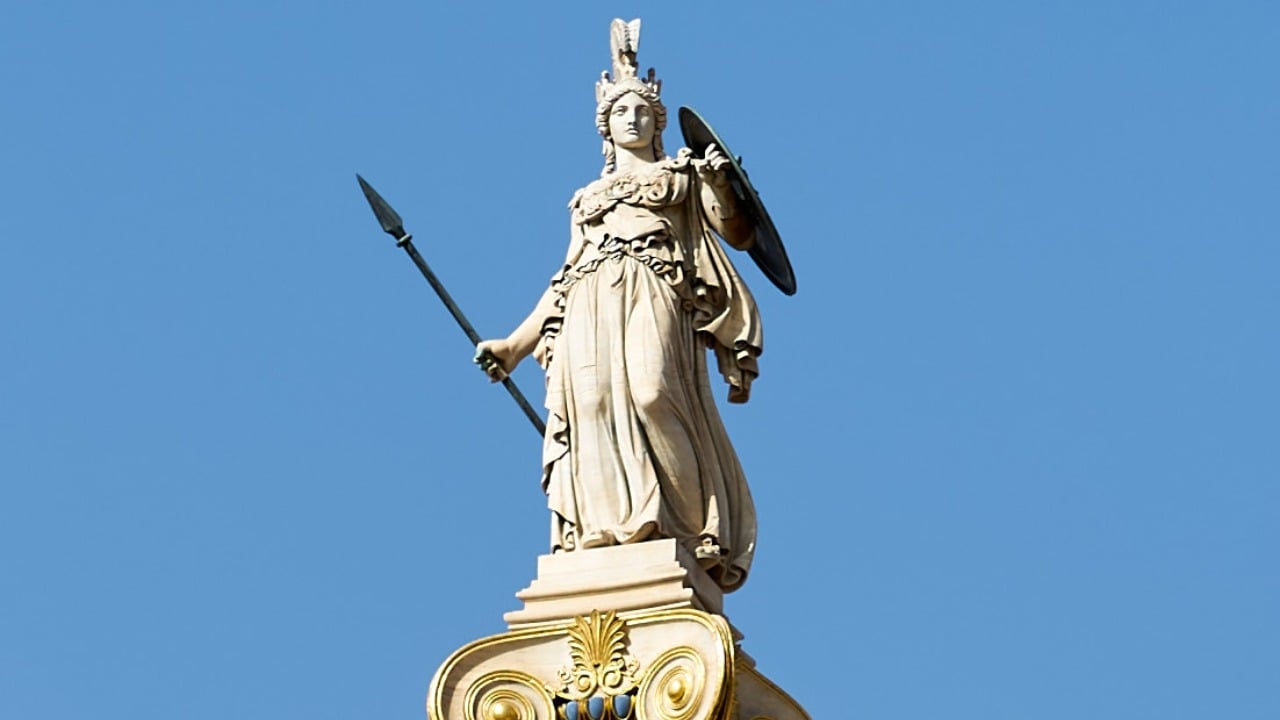A Mexican city is certainly a place where one would least expect to see a statue of an ancient Greek goddess – particularly among its prominent sightsees.
The north-American country of 126 million inhabitants is half the globe away from Greece, land of the Olympian gods, and prides itself of thousands of years of its own ancient history and culture.
Nonetheless, a modern-age bronze statue of Athena, one of the twelve Olympians, locally known as La Minerva, as is the Roman name of the goddess, has become a symbol of the city of Guadalajara in western Mexico.
Built between 1956 and 1957, the emblematic statue was created by Joaquín Arias and Pedro Medina Guzmán.
It was commissioned by the governor of the state, Agustín Yáñez, who reportedly wanted Guadalajara to be recognized as the “Athens of Mexico.”
Statue of Greek goddess Athena with Indigenous facial features in Mexico
The 8-meter-tall sculpture of Athena is located at a roundabout fountain at the crossing of the López Mateos, Vallarta, López Cotilla, Agustín Yáñez, and Golfo de Cortez avenues, in Guadalajara, the capital of the Mexican state of Jalisco, symbolically guarding the city.
The phrase “May justice, wisdom and strength, guard this loyal city” is inscribed at its feet, hinting at the mythological virtues of the ancient Greek goddess.
Athena is represented wearing a Late Roman ridge helmet and a goatskin aegis while she holds a spear with her right hand and a shield with the left one.
Although originally commissioned to feature a Greek figure, the project was modified by sculptor Arias, who re-imagined the ancient goddess with indigenous facial features.
Arias is said to have modelled the statue on notable women of Jalisco that he had photographed, probably also Yáñez’s own wife.

This artistic approach was negatively critisized at the time that the statue was unveiled, but the monument was eventually embraced by the community.
It is understood that the sculptor’s initiative to re-imagine Athena as an indigenous woman is indicative of the universality of goddess Athena and how the virtues that she represents have not only survived through the millennia but have also been welcomed by, and integrated in, modern cultures worldwide.
Universality of Greek goddess Athena
The ancient Greek goddess Athena was associated with wisdom, strategic warfare, intelligence, philosophy, and handicraft.

Her name is first mentioned in Minoan scriptures of the Late Minoan period, c. 1400-1100 BC. The goddess plays an active role in Homer’s Iliad, in which she assists the Achaeans and, in the Odyssey, she is the divine counselor to the ingenious Odysseus.
According to myth, she gave her name to Athens, capital of Greece and birthplace of democracy, after winning a contest with Poseidon as the two deities fought to become the patron of the city.
The famous Parthenon, on the Acropolis of Athens, was the most prominent temple of classical antiquity dedicated to the virgin (“parthenos”) goddess Athena.

As the Romans took over the ancient world after the Hellenistic era, Athena was syncretized with the Roman goddess Minerva, who was additionally associated with justice, music, poetry, medicine, and trade.
The name Minerva derives from the Proto-Italic and Proto-Indo-European words for “intelligent” and archaeological evidence shows that the goddess was worshipped across the European continent, from Italy to Britain.
Since the Renaissance, Athena, or Minerva, has been widely seen as an international symbol of wisdom, the arts, and classical learning.
She is also considered a symbol of freedom and democracy, as the patron deity of Athens, where this system of government was first implemented in the 5th century BC.

Western world inspired by Athena to this day
The virtues represented by the ancient Greek goddess Athena still inspire people across the world today, hundreds of thousands of miles far from her mythological homeland and ancient worship in Greece.
As the ancient Greek and Roman cults faded in the first centuries BC and Christianity prevailed, during the Middle Ages many attributes of Athena were given to the Virgin Mary.
In the Renaissance, Athena re-emerged as a favorite theme in art, and was often used as a symbol for female rulers.
It is believed that depictions of Athena have influenced other symbols of Western freedom, including the Statue of Liberty and Britannia.
Several monumental statues of her were created in the 19th and early 20th centuries, installed at public spaces across the world from Australia to the USA.
To this day, images of the goddess also appear on University logos, military medals of honor, or seals, such as the Great Seal of the US state of California, which bears the image of Athena kneeling next to a brown grizzly bear.



